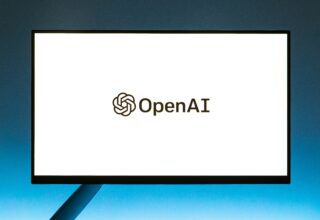By becoming a member of our site, you can add the content you like to your favorites, and present the content you have produced or liked on the internet to our site visitors with the send content option.
Zaten bir üyeliğiniz mevcut mu ? Giriş yapın
By becoming a member of our site, you can add the content you like to your favorites, and present the content you have produced or liked on the internet to our site visitors with the send content option.
You Can Benefit from All Options Exclusive to Our Members by Registering

Next Content:
Exploring Bitcoin’s Financial Tools and Security
Lab-Grown Meat and the Future of Food

Lab-grown meat, also known as cultured meat or cell-based meat, is poised to revolutionize the future of food by offering a sustainable and ethical alternative to traditional animal farming. This innovative technology involves cultivating animal cells in a controlled environment to produce meat that is biologically identical to conventional meat. As concerns over the environmental impact of livestock farming and animal welfare issues grow, lab-grown meat presents a promising solution.
One of the primary benefits of lab-grown meat is its potential to significantly reduce the environmental impact associated with traditional meat production. Livestock farming is a major contributor to greenhouse gas emissions, deforestation, and water consumption. By contrast, lab-grown meat requires fewer natural resources and generates less pollution. Studies suggest that producing meat in a lab can reduce greenhouse gas emissions by up to 96% and use 99% less land and 96% less water compared to conventional meat production. This dramatic reduction in resource use makes lab-grown meat an environmentally friendly option for meeting the global demand for protein.
In addition to environmental benefits, lab-grown meat addresses significant ethical concerns related to animal welfare. Traditional meat production involves the slaughter of billions of animals each year, raising concerns about animal cruelty and the conditions in which livestock are raised. Lab-grown meat eliminates the need to raise and kill animals for food, providing a more humane way to enjoy meat. This ethical advantage is likely to appeal to vegetarians, vegans, and animal rights activists, potentially expanding the market for lab-grown meat.
Food safety is another critical advantage of lab-grown meat. Traditional meat production is associated with risks such as bacterial contamination (e.g., E. coli and Salmonella) and the spread of zoonotic diseases (e.g., avian flu and swine flu). Lab-grown meat is produced in sterile, controlled environments, reducing the risk of contamination and disease transmission. This enhanced safety could lead to fewer foodborne illnesses and a more reliable meat supply.
The nutritional profile of lab-grown meat can also be optimized to meet consumer health needs. Scientists can alter the composition of cultured meat to enhance its nutritional value, such as increasing the levels of beneficial fats (e.g., omega-3 fatty acids) and reducing harmful components (e.g., saturated fats). This capability allows for the production of healthier meat products that can cater to specific dietary requirements and health-conscious consumers.
Despite its numerous advantages, lab-grown meat faces several challenges before it can become a mainstream food option. One of the primary hurdles is scaling up production to make it cost-competitive with traditional meat. Currently, the production of lab-grown meat is expensive, primarily due to the high cost of the growth media used to culture cells. However, advancements in biotechnology and economies of scale are expected to reduce these costs over time, making lab-grown meat more affordable for consumers.
Another challenge is consumer acceptance. While the idea of lab-grown meat is gaining traction, some consumers may be hesitant to adopt this new technology due to concerns about its safety, taste, and naturalness. Educating the public about the benefits and safety of lab-grown meat, along with transparent labeling and marketing efforts, will be crucial in overcoming these barriers.
Regulatory approval is also a significant step for the widespread adoption of lab-grown meat. Governments and regulatory bodies need to establish clear guidelines and standards for the production and sale of cultured meat to ensure its safety and quality. The first regulatory approval for lab-grown meat was granted in Singapore in 2020, marking a significant milestone for the industry. As more countries begin to approve and regulate lab-grown meat, its presence in the market is expected to grow.
In conclusion, lab-grown meat represents a transformative development in the future of food, offering substantial environmental, ethical, and health benefits. By addressing the challenges of traditional meat production, such as environmental degradation, animal welfare concerns, and food safety risks, lab-grown meat has the potential to become a sustainable and widely accepted alternative. As the technology advances and production costs decrease, lab-grown meat is likely to play a crucial role in meeting the global demand for protein while promoting a more sustainable and humane food system.
We offer our respects and wish you a good reading. – Who Learns What? Team
- On-Site Comments































